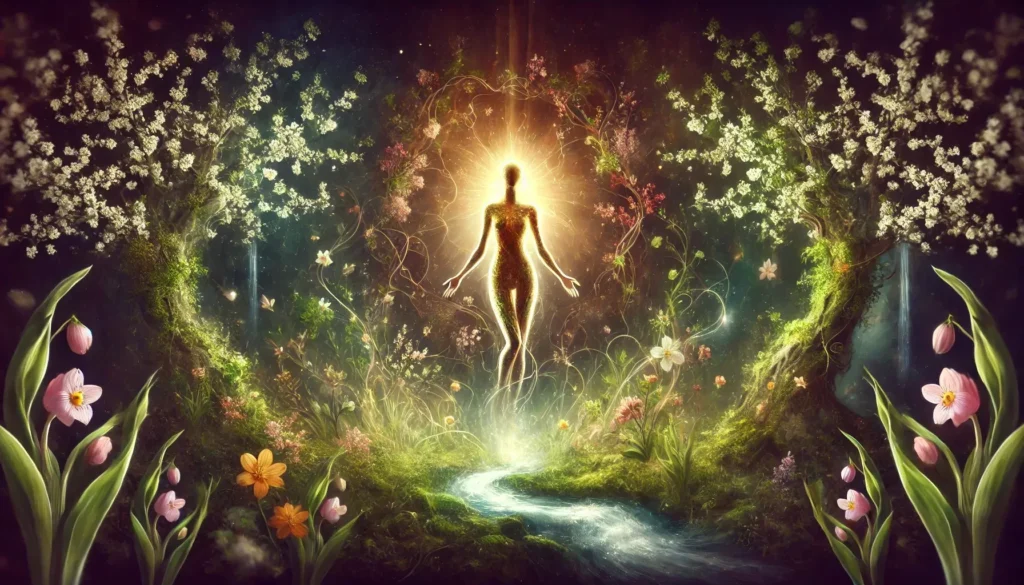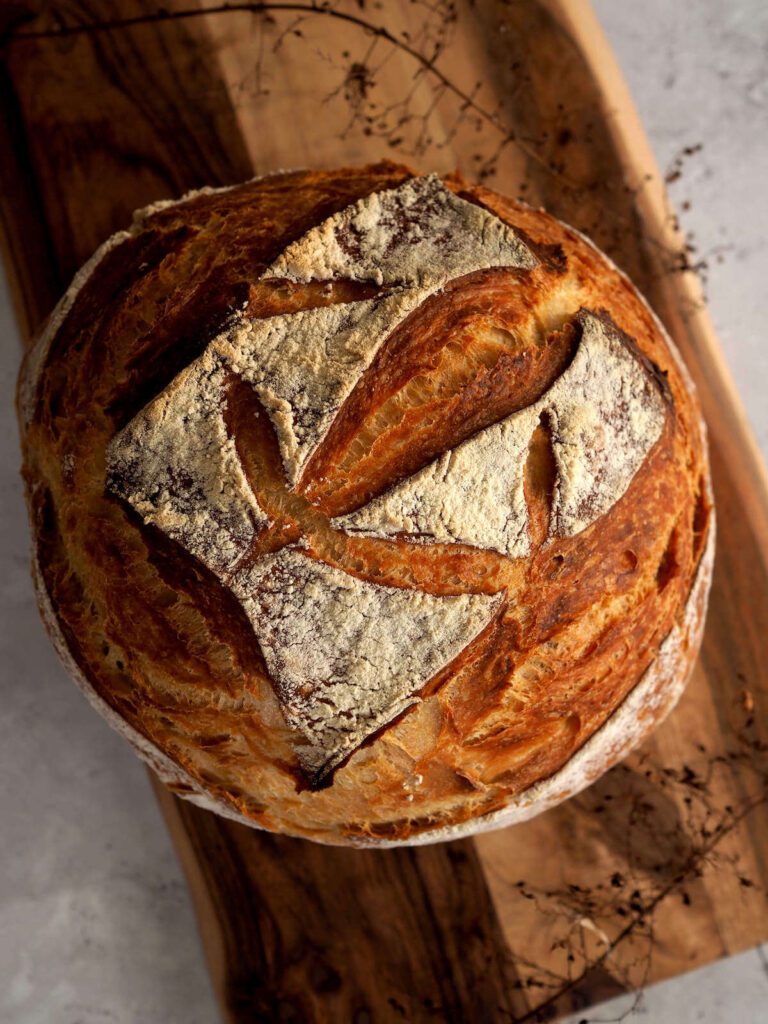As winter’s grip softens and the first tender shoots push through the earth, cultures around the world awaken to the promise of renewal. Throughout the ages, the sacred feminine has been celebrated as the nurturer of life, wisdom, and beauty—a force that transforms darkness into light. In this post, we explore the timeless myths and enduring legacies of five revered goddesses whose stories continue to inspire our springtime celebrations.
- Brigid: The Flame of Healing and Inspiration
Essence & Role:
In ancient Celtic tradition, Brigid is revered as a goddess of fire, healing, poetry, and fertility. Her gentle flame symbolizes warmth, transformation, and the hope that emerges even in the coldest days.
Legend:
It is said that during the bleakest winters, Brigid would ignite a solitary sacred fire in humble hearths. From that flame, water of life would miraculously spring forth—restoring hope and nurturing the land. Devotees left simple offerings—oat cakes and butter—on their hearths to invite her blessings and ensure a bountiful, radiant spring.
Legacy:
Today, the spirit of Brigid lives on in Imbolc and Candlemas celebrations. Her legacy is a reminder that healing, creativity, and new beginnings are always within reach, and that a single spark can light the path to renewal.
- Maa Saraswati: The Muse of Wisdom and Creative Awakening
Essence & Role:
In the sacred traditions of India, Saraswati embodies wisdom, art, and the power of knowledge. Often depicted in serene white, she represents purity and the flowering of creativity that accompanies the arrival of spring.
Legend:
Legends describe Saraswati as born of celestial waters, emerging to bestow the gifts of learning and music upon humanity. During Vasant Panchami, the festival that celebrates her, students, artists, and scholars invoke her blessings, hoping that her gentle guidance will transform mundane thoughts into inspired creativity.
Legacy:
Saraswati’s myth reminds us that spring is not solely a season of physical renewal but also of intellectual and artistic flourishing. Her influence can be seen in the blossoming of literature, music, and art each spring—a testament to the enduring power of the divine feminine.
- Inanna: The Queen of Transformation
Essence & Role:
In the ancient world of Sumer, Inanna stood as one of the most complex and powerful deities. Known as the Queen of Heaven, she embodied love, war, fertility and transformation. Her dual nature—capable of both creation and destruction—made her a symbol of the eternal cycle of life, reflecting the multifaceted essence of the divine feminine.
Legend: One of the most striking myths of Inanna is her bold descent into the Underworld. In a journey fraught with peril, she ventured into the realm of the dead, shedding her divine regalia and confronting the forces of darkness. This daring quest was not merely an act of defiance but a profound exploration of transformation. Through the trials of her descent, Inanna emerged reborn—her return symbolising the promise of renewal and the cyclical nature of existence. Her myth teaches that embracing both light and shadow is essential for true rebirth, much like the seasonal transitions of spring.
Legacy: Inanna’s influence extended far beyond her Sumerian origins. Her legacy evolved into the Babylonian Goddess Ishtar, whose worship permeated Mesopotamia and influenced neighbouring cultures. Even today the themes embodied by Inanna—passion, resilience and transformation—resonate deeply. As spring ushers in new life, her myth serves as a reminder that renewal often comes through embracing life’s contrasts, transforming adversity into growth.
- Eostre: The Dawn-Bringer of New Life
Essence & Role:
Eostre, from Germanic and Celtic traditions, is celebrated as the harbinger of spring. Her arrival signals the balance between light and dark, as day and night become equal, and nature begins its cycle of rebirth.
Legend:
According to myth, Eostre once transformed a sorrowful bird into a joyful hare, which then miraculously began laying eggs—a symbol of new life and fertility. This enchanting tale gave rise to many of the symbols associated with Easter today, such as eggs and hares, and has inspired festivals that celebrate renewal and the promise of growth.
Legacy:
Modern Easter customs, from egg decorating to the playful lore of the Easter Bunny, still echo Eostre’s ancient rites. Her story is a reminder that every ending carries the seeds of a new beginning, and that nature’s cycles are eternal.
- Flora: The Radiance of Blossoming Life
Essence & Role:
Flora, the Roman goddess of flowers, personifies the exuberance of spring. She is celebrated as the nurturer of all things blooming, infusing the world with colour, joy, and an abundance of life.
Legend:
One myth tells of a forlorn nymph transformed by divine grace into Flora—the embodiment of nature’s rebirth. Her tears of longing turned into petals, and from her gentle embrace, a myriad of flowers burst forth across the land. The week-long festival of Floralia was once held in her honour, filled with theatrical performances, feasting, and vibrant celebrations.
Legacy:
Although Floralia has largely faded into the annals of history, its essence survives in modern May Day festivities and springtime floral celebrations. Flora’s enduring presence reminds us to embrace the beauty and vitality that each new bloom represents.
- Persephone: The Queen of the Underworld and Harbinger of Spring
Essence & Role:
In Greek mythology, Persephone is both a symbol of sorrow and a beacon of renewal. As the daughter of Demeter and the reluctant queen of the underworld, her annual descent and return mirror the cycle of winter dormancy and springtime rebirth.
Legend:
Abducted by Hades, Persephone’s time in the underworld brought famine and sorrow to the earth. Yet, her eventual return—negotiated by her grieving mother—marked the end of winter and the start of spring. Her story is a poignant allegory: when darkness seems insurmountable, the promise of light and life always follows.
Legacy:
Persephone’s myth endures as a powerful symbol of transformation. Her tale inspires us to find hope in every loss, reminding us that even in our darkest moments, renewal is just around the corner.
The Lost Connection: Rediscovering the Divine in Nature
In the ancient world, the Divine was not distant or abstract—it was woven into the very fabric of everyday life. Every sunrise was a hymn, every hearth a sacred altar, and every changing season a reminder of the eternal dance between light and darkness. The reverence for goddesses like Brigid, Saraswati, Inanna, Eostre, Flora, and Persephone symbolized this intimate bond between humanity and nature—a bond that celebrated fertility, wisdom, and the cyclical renewal of life.
Over the centuries, as monotheistic religions emerged and societies modernized, these rich, multifaceted expressions of the Divine were often marginalized or reinterpreted. The sacred fires, vibrant festivals, and nature-based rituals that once marked the passage of time became, for many, relics of a bygone era—seen as redundant in an age of scientific rationality and digital connectivity.
Yet in the quiet corners of modern life, there is a growing yearning to reclaim that lost connection. Neo-pagan and indigenous movements are reviving ancient rituals, and many of us are seeking to reawaken the memories of sacred spaces—hearths and fields where the Divine was felt in every breath. This revival is not merely nostalgic; it is a conscious effort to reforge our bond with nature, to embrace ancestral wisdom, and to celebrate a more holistic, interconnected way of living.
In rekindling these traditions—whether by lighting a fire, preparing a meal with ancient ingredients, or honouring a goddess through ritual—we rediscover that the Divine has never truly been lost. It lingers in every blossoming flower, every grain of salt, and every ray of sunlight, inviting us to remember our place in the timeless cycle of renewal.
Conclusion: Rekindling the Sacred Flame of Renewal
Each of these goddesses—Brigid, Saraswati, Inanna, Eostre, Flora, and Persephone—offers a unique lens through which to view the cycle of renewal. Their legends, steeped in the mystique of ancient times, celebrate the divine feminine in all its forms: the healer, the muse, the life-giver, the nurturer, and the transformer. They remind us that spring is not just a season, but a sacred promise—that darkness gives way to light, and every end births a new beginning.
Hearthkeeper’s Secret
“In every whisper of the wind, in every ray of the awakening sun, the spirit of these ancient goddesses endures. As you celebrate the season, let their stories kindle a fire in your heart—a flame of hope, wisdom, and endless renewal.”

